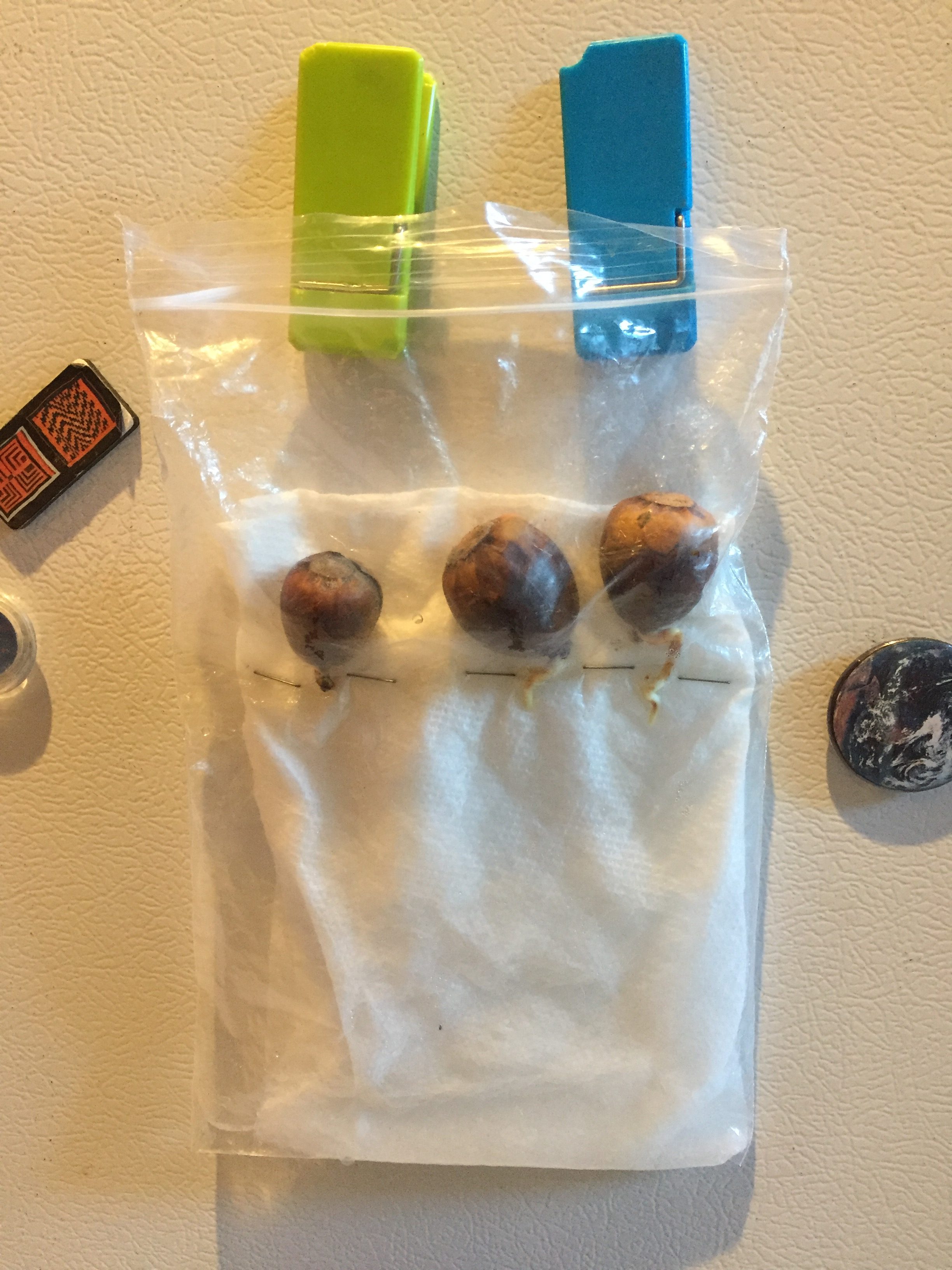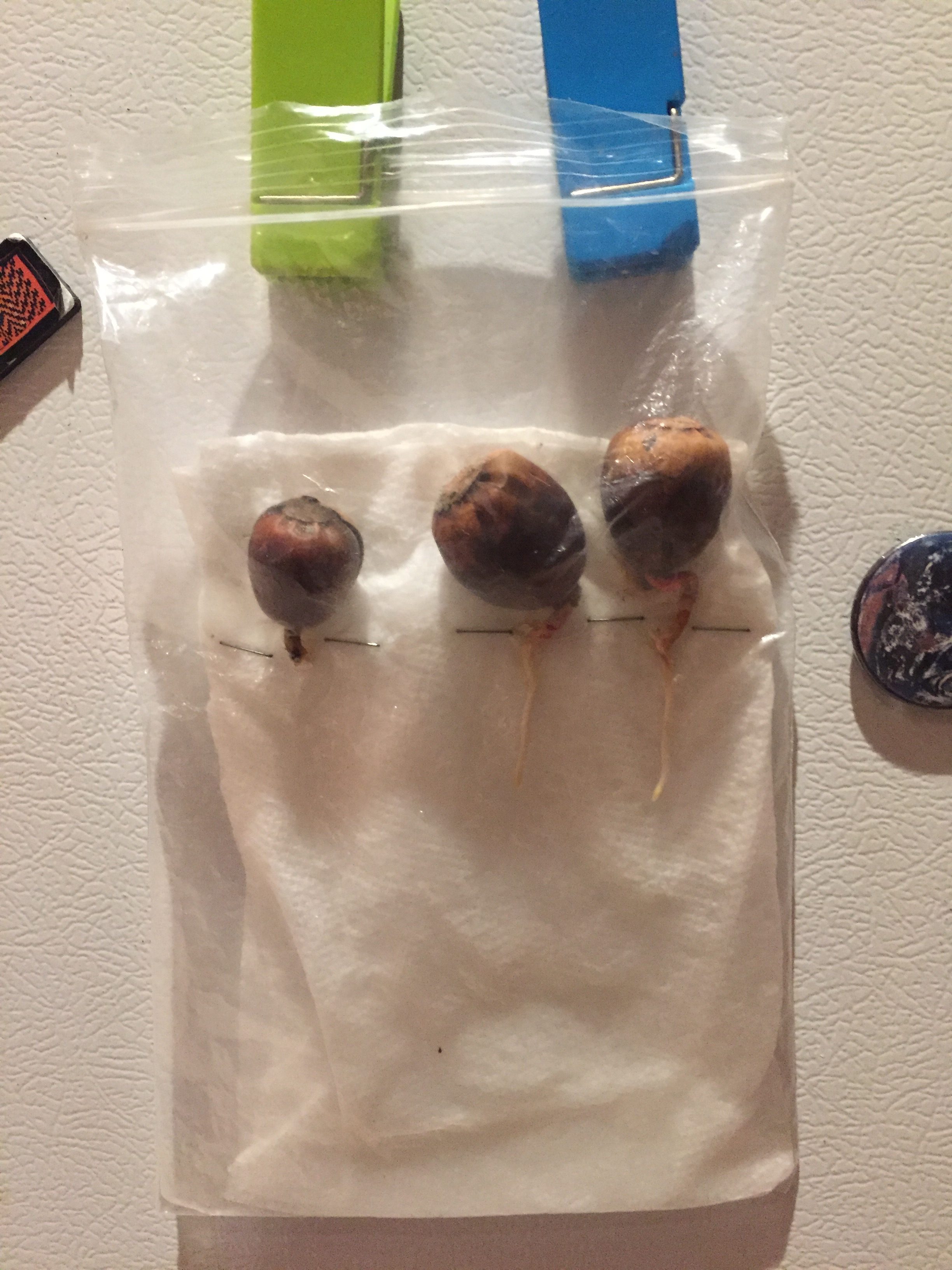Acorns for fun in science
By Peggy Ashbrook
Posted on 2018-11-03
This fall there are an abundance of acorns falling from the oak trees in my area. Scientists study oak trees to understand possible reasons why some years larger amounts of acorns are produced than others.
Acorns are free material for early childhood science explorations, with permission from the landowners. A nature walk among trees exposes children to new vocabulary in a meaningful context. “For example, as they learn the word acorn, they also learn that a variety of adjectives such as dark, ripe, rotten, and elliptical are suitable when providing detailed observations” (Arreguin-Anderson, Alanis, and Gonzalez).
The shapes of acorns vary from one oak species to another (see identification resources below) and make a wonderful addition to a sensory table (as long as your children are older than 3 years and are not putting objects in their mouths). After several weeks children may notice holes in the acorns and discover the tiny grub or caterpillar-like animals that emerged from the acorns. These are baby insects, acorn weevils, and provide an opportunity to wonder at this specific relationship of plant and animal.
As children use acorns at the sensory table, or as game pieces, in imaginative play, and in art explorations they will notice and sort acorns by attributes such as size, shininess, or the texture of the cup (“hat”).
Acorns roll but not in the same way as marbles—something to discover when setting up ramps for rolling. Spinning an acorn is easier when a stem is added to make it into a spinning top. Make a hole by pushing a nail or awl into the top after the cup is removed, on the opposite side from the small point on the bottom. It is easier to poke a hole in the tops of some acorns than others.
Do all acorns float? Or do they sink? The cupula or cup of an acorn makes a tiny boat.
You might find that some of the acorns you gather are already growing a root. Plant them in soil to grow a tree or put them into a clear container or bag to watch the root and sprout growth.
- Staples hold the nut above the water reservoir.
- After a week the roots are longer.
Read about the way other educators engaged children in examining acorns in these two articles from Science and Children:
“Methods and Strategies: Using Acorns to Generate an Entire Alphabet” by Maria Guadalupe Arreguin-Anderson, Iliana Alanis, and Irasema Salinas Gonzalez. Science and Children 53(6): 76-81. February 2016
“Planting Deeper: Outdoor experiences challenge children’s misconceptions about the needs of plants” by Ana Maria Caballero and Nermeen Dashoush. Science and Children 55(2): 56-61. October 2017
A few tree identification web sites:
Department of Natural Resources Madison, Wisconsin Division of Forestry. Forest Trees of Wisconsin: How to know them.
https://dnr.wi.gov/files/pdf/pubs/fr/FR0053.pdf
The Maine Forest Service. 2008. Forest Trees of Maine. https://www.maine.gov/dacf/mfs/publications/handbooks_guides/forest_trees/index.html
Oaks in particular:
https://www.maine.gov/dacf/mfs/publications/handbooks_guides/forest_trees/pdf/Oaks.pdf
Stein, John, Denise Binion, and Robert Acciavatti. 2003. Field Guide to Native Oak Species of Eastern North America. USDA Forest Service
https://www.fs.fed.us/foresthealth/technology/pdfs/fieldguide.pdf
Texas A&M Forest Service. List of Trees.
http://texastreeid.tamu.edu/content/listOfTrees/index.aspx?t=O
York, Harlan. 100 Forest Trees of Alabama. Division of Forestry, Alabama Department of Conservation. http://www.forestry.alabama.gov/TreeIDIndex.aspx?bv=5&s=1
Disclaimer: The views expressed in this blog post are those of the author(s) and do not necessarily reflect the official position of the National Science Teaching Association (NSTA).





